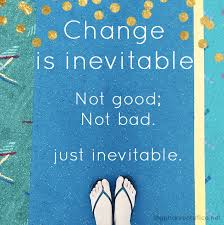Today, in the fast-paced business world, change is constant. In fact, change is so pronounced today that most companies only complete strategic planning for three to five years in advance, while it was not uncommon even a decade ago to focus on planning five to ten years in advance.
With constant changes in technology, marketing, consumer demands, employment practices, and even the expectations of employees, change can seem overwhelming, especially for those who are resistant or even fearful of change.
There are some highly effective strategies to help you to deal with change, even if you are uncomfortable with the process. By taking a logical and structured approach, even those with a strong sense of tradition and consistency can handle change as it occurs.
Look for Routines in Times of Change
For people that have difficulty in responding positively to change, the stress is often caused by changes in routines and practices. It can be easy to become focused on the chaos and forget there are still routines that are maintained.
Building in routines to your day is a way to help to alleviate feelings of stress due to change. If you thrive on structure, then create a structure within your workday as well as in your personal life.
Look at Lifestyle Choices
There is a large volume of research about the role of a healthy lifestyle in reducing stress of any kind. Focusing on healthy eating, getting regular exercise, and managing unhealthy issues such as smoking or alcohol consumption can help our bodies and our minds to have the energy needed to deal with change.
A sure sign that you are stressed during a change is the sudden appearance of cravings for high carbohydrate and high sugar foods. If you find yourself wanting chocolate, cookies, bread and processed types of baked goods and snacks, try substituting healthy fresh fruits, vegetables, and lean proteins.
Look for the Silver Lining
It is easy to become drawn to the negatives or the losses that may occur when there is a change. Perhaps you have to give up a well-known software program and switch to something new, or maybe your business is moving from face-to-face sales to online or phone sales.
Rather than focus on what you are losing or giving up, look at what you gain. Be open to the option that the new software program reduces data entry needs or automates reporting practices, freeing up more of your time. You may find that by using phone sales or online marketing over face-to-face sales, you can provide more frequent communication with your customers and improve your ability to respond to their needs.
The key is to be proactive about change. Acknowledge it is difficult and uncomfortable, and then look for ways to support your efforts in making the transition. Also, be sure to surround yourself with those who are positive and actively working on change. At the same time, avoid spending time with those who are hostile or passive-aggressive in adopting a new way of doing business.

